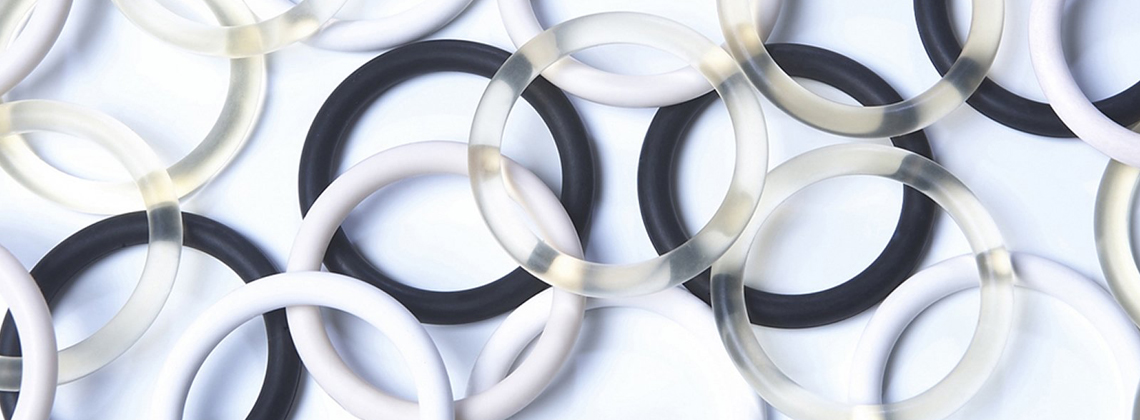How does an O Ring work?
What is an O Ring and how does it work?
O Ring Basics
The O Ring is one of the most standard and easiest types of seal for dynamic and static installations. The design of the O Ring’s groove is fairly straightforward. A dependable and economical seal is acquired by following well-developed principles for groove geometry. The primary reason an O Ring makes a remarkable seal is its proneness to return to its original shape when the cross-section is compressed.
An O Ring seal consists of a rubber circular cross-section into a designed O Ring groove, which provides an initial compression.
The strength needed to compress an O Ring is an outcome of the cross-section diameter and durometer. O Ring elongation affects the seal squeeze by lowering the cross-section, that lessens the sealing capacity of the O Ring.
At a very little stress, the natural resistance of the elastomer element ensures the seal. Seal productivity may be enhanced by the growth of the diametrical compression. This heightened compression can be disadvantageous in higher-stress dynamic sealing installations.
The diametrical compression presents a rubbing force amongst the O Ring and the groove that keeps it in the fixed setting. O Rings are designed to deform, the elastomer element runs up to the extrusion gap, entirely sealing it from leakage, until the stress implemented is adequate enough to conquer the rubbing constraints and deform the O Ring into the little extrusion gap (presuming the elastomer has obtained its restraint of flow under stress, additional increase of force will cause collapse by extrusion or trim).
The groove is created to offer a precursory force on the seal over one axis in the scope of 7% – 30%. This compressive force is generally perpendicular to the force being executed. There is a free volume in the groove on the other axis.
When stress is implemented, the O Ring will travel towards the low-stress part of the groove. The sealing stress is moved to the area to be sealed, which is, in fact, greater than the implemented fluid stress by the quantity equivalent to the primary interference stress.
Increasing the implemented stress forms an obstructing pressure between the elastomer and the mating surfaces. While this situation continues, the O Ring will remain to operate routinely and efficiently up to a number of hundred pounds of force, presuming the O Ring chosen is the right size and the groove is engineered to the adequate size.
With increasing stress, O Ring deformation will be excessive, eventually extruding a part of the O Ring into the extrusion gap. If the extrusion gap is too big, the seal will collapse after it is entirely extruded from the high stress.
Upon release of the stress, the elasticity of the elastomer element allows an O Ring to go back to its original form, ready for similar cycles.
These materials, at their standard functioning temperature, are nearly impossible to squeeze and have a very low flexible coefficient. Their shape can be changed (but not their volume) and the diametrical compression applied will generate an enhance in length of the seal across the groove.
This enhances will be even bigger due to a broadening of the elastomer, because of the heat from the liquid being sealed and the conformity of the materials. The groove must be adequately sized to provide for the utmost expansion of the elastomer element. Failing that, the installation will build up very high pressures.
When sufficient force is exerted, the O Ring will travel in direction of the low-stress side until it reaches the side of the groove. Further force or stress will deform the O Ring in direction of the extrusion gap. The O Ring will primarily deform into a D shape. This deformation will enhance the surface contact area to 70% – 80% of the primary cross-section. Under high stress, the surface contact area of an O Ring is approximately double that of the primary geometry at no stress.
The chance of seal extrusion is not restricted to dynamic installations. In a static axial installation, elongation of application bolts under high stress can open the extrusion gap enough to permit leakage.
Inner stress bounds are specified by the clearance gap and the O Ring hardness. The gap is generally determined for a given ring size and installation. If functioning at low temperatures, it may be needed to decrease the gland depth to make up for the contraction of the ring and supply the demanded compression at the contracted size.
At the other end of the temperature range, it may be recommended to enhance the groove depth moderately to prevent overly compressing the ring at functioning temperatures. Due to the modulus of thermal broadening of rubbers is higher than that of metals, this effect can be substantial at rigid temperatures.
Primary deformation of an O Ring in a groove, O Ring is experiencing system pressure.
M Barnwell Services stock a vast range of O Rings available in many materials. These include: Perfluoroelastomer (FFKM), Nitrile (NBR), Hydrogenated Nitrile (HNBR), Viton® (FKM/FPM), Viton® A, Viton® B, Viton® GF, Viton® GLT, Viton® GFLT, Viton® ETP, Ethylene Propylene (EPDM), Silicone (VMQ), Polytetrafluoroethylene (PTFE) and Fluorosilicone (FVMQ).
If you would like more information about our range of products and/or services, download our catalogue or contact a member of the team.
E & OE. M Barnwell Services endeavours to make sure that all content is correct. Information has been gained from manufacturing partners.

